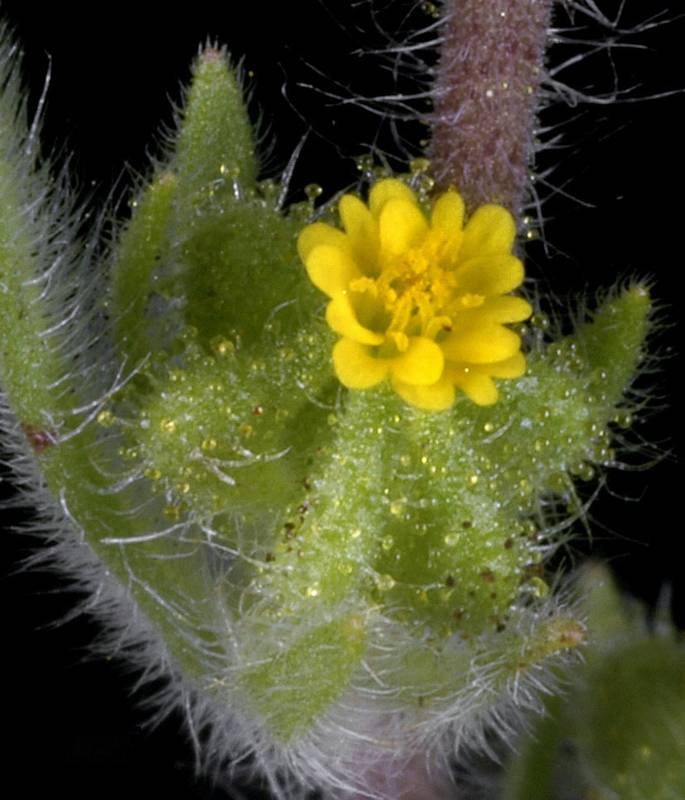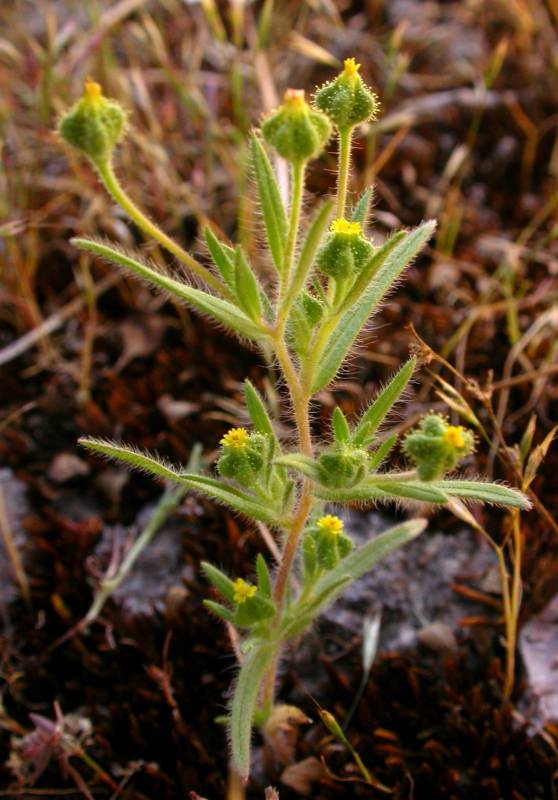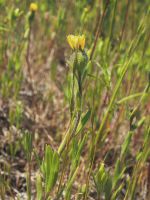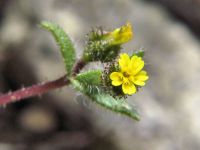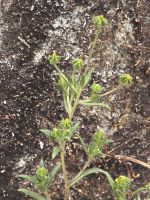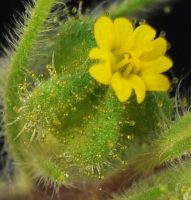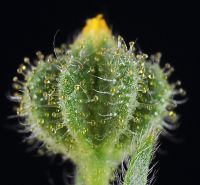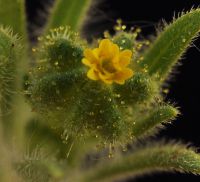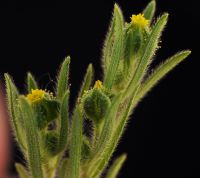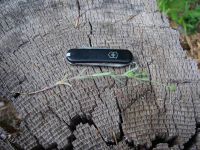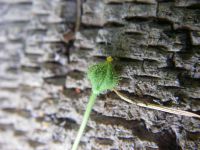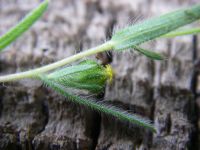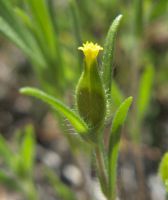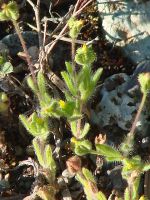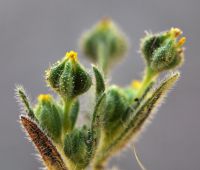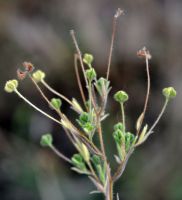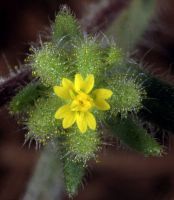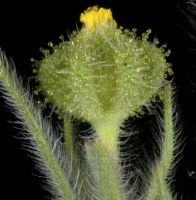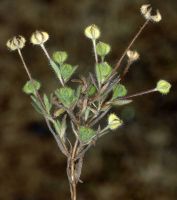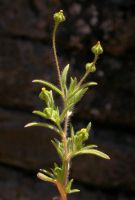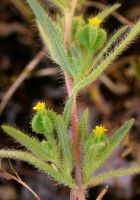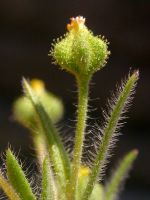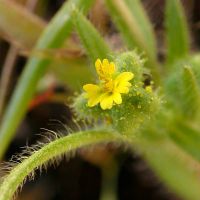Distribution: Occurring on both sides of the Cascades crest in Washington, but more common east of the crest; British Columbia to California, east to Montana, Idaho, and Nevada.
Habitat: Dry, open woods, grasslands, roadsides, and other open areas where often disturbed, from the plains and foothills, occasionally up to middle elevations in the mountains.
Flowers: May-July
Origin: Native
Growth Duration: Annual
Conservation Status: Not of concern
Pollination: Bumblebees, bees, beetles, moths
Slender annual, up to 3 dm. tall, branched above, the herbage glandular and covered with short, stiff hairs.
Leaves linear, entire, 1-4 cm. long and 1-2 mm. wide, the lower opposite and the middle and upper alternate.
Heads on filiform, naked peduncles, small, nearly globose; involucre 2.5-4.5 mm. high, of 4-8 hairy, strongly glandular, equal-length bracts; rays very short and inconspicuous, their achenes compressed parallel to a radius of the head; disk flower solitary, surrounded by united bracts.
Publication: Proc. Amer. Acad. Arts. 8: 391. 1872.
PNW Herbaria: Specimen records of Madia exigua in the Consortium of Pacific Northwest Herbaria database.
WA Flora Checklist: Madia exigua checklist entry.
OregonFlora: Madia exigua information.
E-Flora BC: Madia exigua atlas page.
CalPhotos: Madia exigua photos.
USDA Plants: Madia exigua information.

